Hokkaido Guide Stories – Cycling Around the Daisetsuzan Mountains
, by Richard
Adventure Hokkaido guide Richard shares his experience cycling in the Daisetsuzan National Park on our Around Daisetsuzan 7 Day Cycling Tour during the summer of 2021.
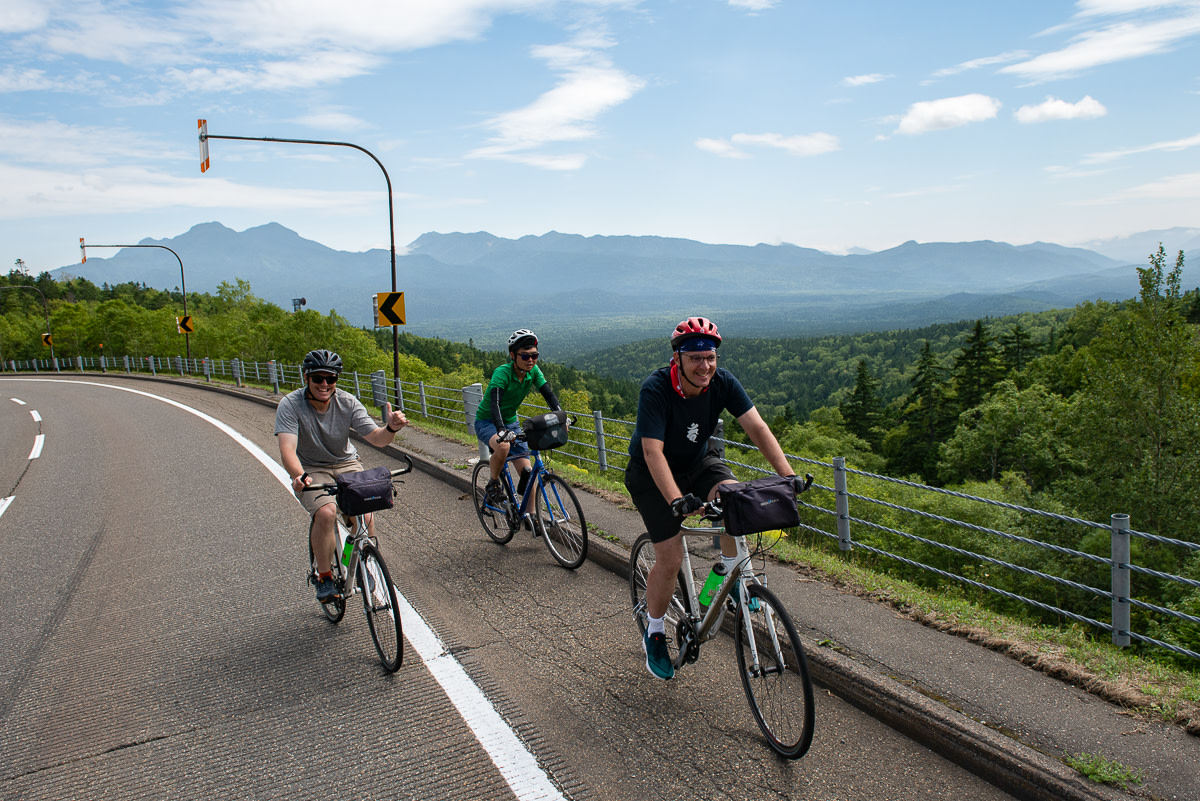
Ever since I first set foot in the Daisetsuzan Mountains, I have always been fascinated by the contrast between the rugged peaks and the rolling hills that sit at the base of the mountains. So it is natural that I jumped at the chance when I was asked to join our Around Daisetsuzan 7 Day Cycling Tour in August 2021. When guiding tours you usually spend half your time driving the support car, but I would be riding the whole route to get to know it first-hand.

The ride loops around the Daisetsuzan mountain range, which forms Japan’s largest national park. Starting in Shirogane Onsen, near Biei, and finishing in Asahikawa, the route covers almost 360km and includes a climb of Mikuni Pass, the highest pass in Hokkaido. Having bike toured in New Zealand before, I was looking forward to getting back into the rhythm of spending days on the road.
Day 1 – Meet at Shirogane
The first day of the tour is a travel day. I joined Ayu for the drive to Shirogane Onsen, where we would start the ride. Ayu was one of the guides on this trip and as we chatted about cycling he said something that I think perfectly captures what makes a multi-day cycling trip so enjoyable; “Nothing lets you travel as far under your own steam than cycling”.
The other guide was Dai, we would be leading the trip. I had ridden with Dai on our Lake Toya to the Sea of Japan Cycling Tour earlier in the year and it was good to catch up with him. The two guests on the tour had both travelled up from Tokyo. Paul cycled regularly but this was his first longer ride. Shin was a keen triathlete and had brought his own lightweight road bike which looked fast. Dai stressed that the goal of the tour wasn’t to ride as one group and that each member was free to ride at their own pace, the van would lead the group while the cycling guide would bring up the rear. Personally, I was glad I wouldn’t feel like I was holding Shin back!
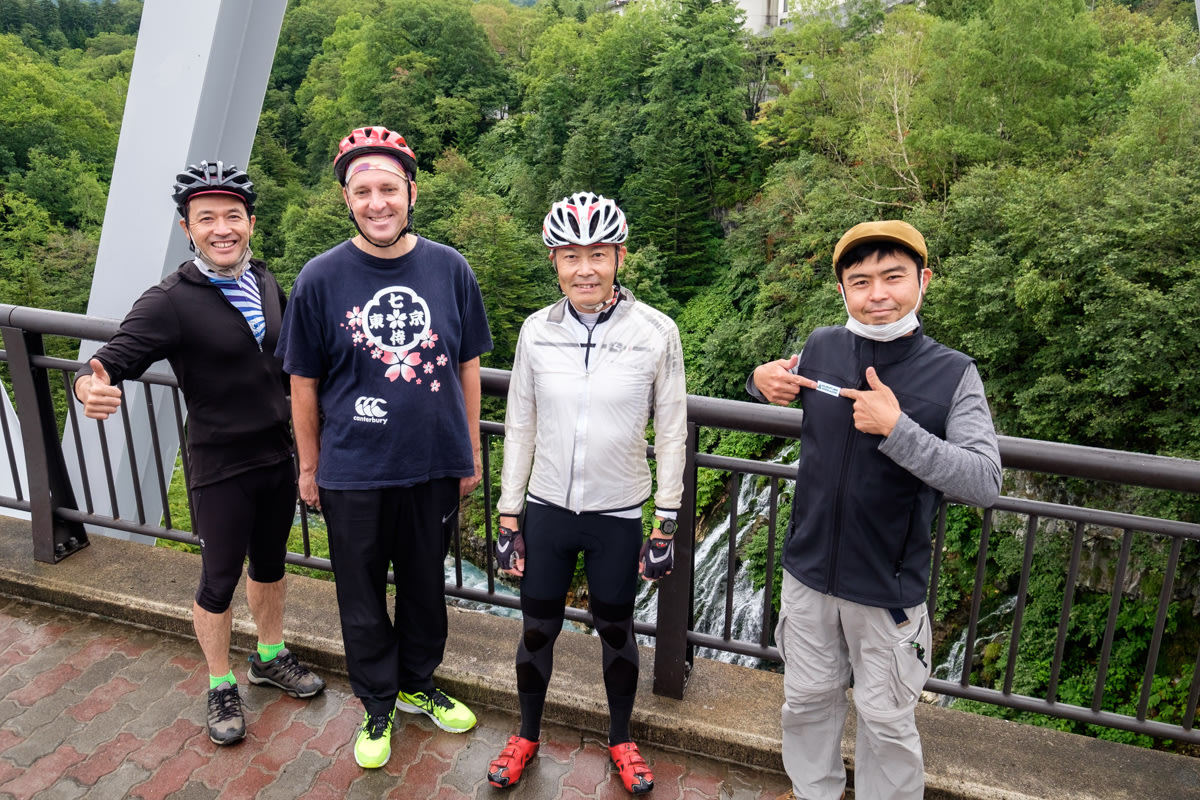
Day 2 – Shirogane to Furano
Our first day of riding would cover 80km, riding through the rolling hills around Biei before heading south to Furano. It had been a while since I had ridden more than 50km in a day, so I was looking forward to seeing how my legs felt after the ride.
The ride started with a relaxed downhill ride following the course of the Biei river. We ticked off two of the area’s famous tourist destinations, Shirahige (White beard) waterfall and the Blue Pond, having hardly turned our pedals. Next up was our first climb of the trip. The rolling landscape of Biei means you naturally do a lot of up and down, but you can avoid the steep climbs and the downhills are a nice break. The kilometres felt effortless as we took in the views of Hokkaido’s “mini-Tuscany” and ticked off more of the famous spots.
I lived in Biei for a period when I first settled in Hokkaido year-round. While it was nice to revisit all the highlights, it was the “in-between” riding I enjoyed the most. Compared to driving, the scenery alongside the road feels much more immediate when you are cycling. The pace of cycling also makes it easier to appreciate the patchwork of fields; planted with buckwheat, potatoes and wheat.
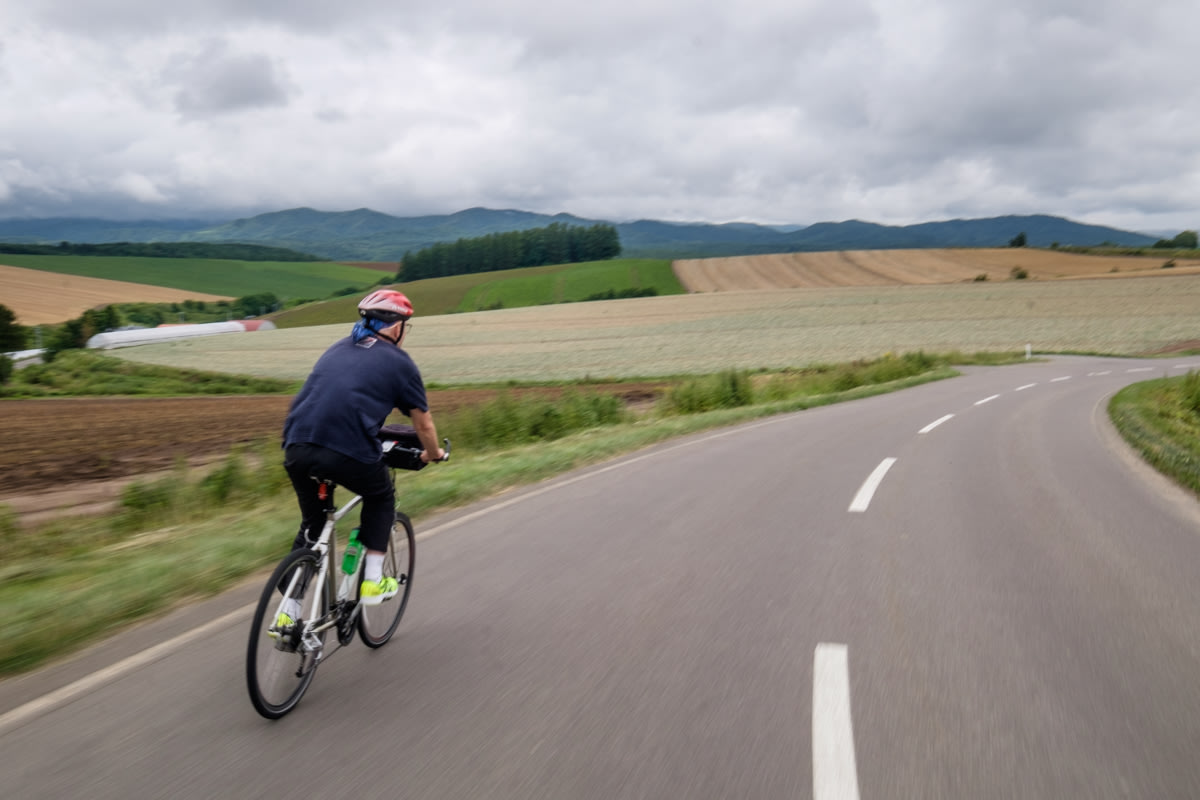
It was fitting that we pulled into a local soba restaurant for lunch; the noodles are made with buckwheat from the very fields we cycled past. After refuelling we set off towards Furano, the landscape slowly transitioning from a patchwork of fields spread over rolling hills to flat farmland planted with rows of golden rice.
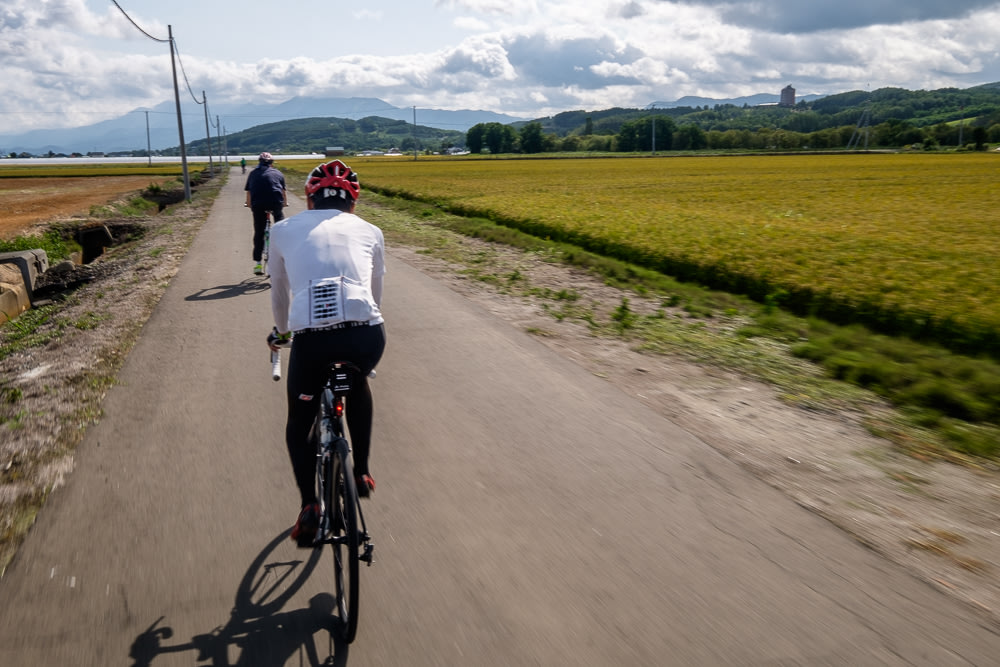
Everyone seemed to have found their rhythm and we all alternated between chatting as we rode and just quietly soaking in the scenery. The sun came out as we rolled into Naka-Furano town. We made another pit stop at Farm Tomita to see (and smell) the lavender, have a refreshing ice cream and restock on water. Being able to refill your water bottle regularly is another bonus of having a support van!
It didn’t feel like we had ridden 80km as we pulled into the hotel in Furano under the afternoon sun, perhaps the scenery provided a constant distraction. I felt a little bit more confident about the coming days, but I also knew that we hadn’t done any real climbs yet; those were still to come.
Day 3 – Furano to Sahoro

Today we would tackle the first pass of our ride, the Karikachi pass. But first, we would follow the course of the Sorachi river from Furano to its beginning at the confluence of the Shisorapuchi and Ruomansorapuchi rivers.
We set off from Furano under a blue sky, taking in the views of the mountains from a quiet farming road before we joined the national highway. As we rode, Paul and I discussed stories of aggression towards cyclists in our home countries, a stark contrast to drivers in Japan, who are polite and avoid endangering cyclists. I have never been “close passed”. I have also never heard of a driver being aggressive towards a cyclist.
With almost perfect timing, we were flagged down as we rode through a small hamlet by an older gentleman driving an Audi TT. Our first thoughts were that perhaps he was annoyed that we were difficult to overtake, or we had done something wrong. We were quite surprised when he pulled out a bag and with little explanation gave us each a warm cob of fresh sweetcorn. It was a wonderful impromptu break.
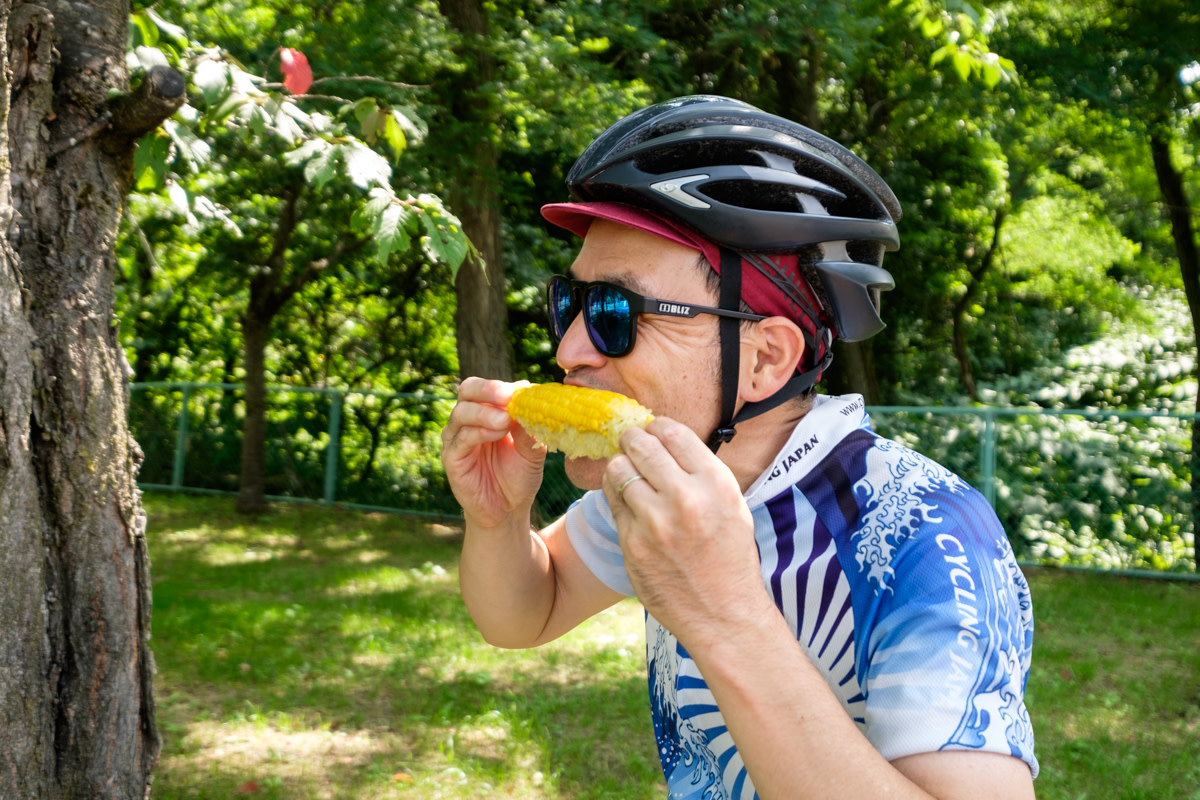
Fueled up on sweetcorn, we made our way up to the shore of Lake Kaneyama. While the lake was low, due to the dry summer, the winding lakeshore road was pleasant cycling, shaded by tall spruce trees. Shin had started to stretch his legs and was riding out ahead, while Paul was enjoying the views, stopping to take photos. Enjoying the rolling terrain, I decided to test what my cycling fitness was currently like. Needless to say, I never caught Shin who was already relaxing when I arrived at lunch!
The final town before Karikachi Pass was Ochiai. The Shisorapuchi River that runs into town is popular for whitewater rafting and Dai had worked here as a raft guide. He suggested we make a short detour to Cafe Berries, a quaint cafe along the river that is set amongst white birch trees. The homemade berry juice alone was worth the detour and provided a little extra boost to get over the pass.
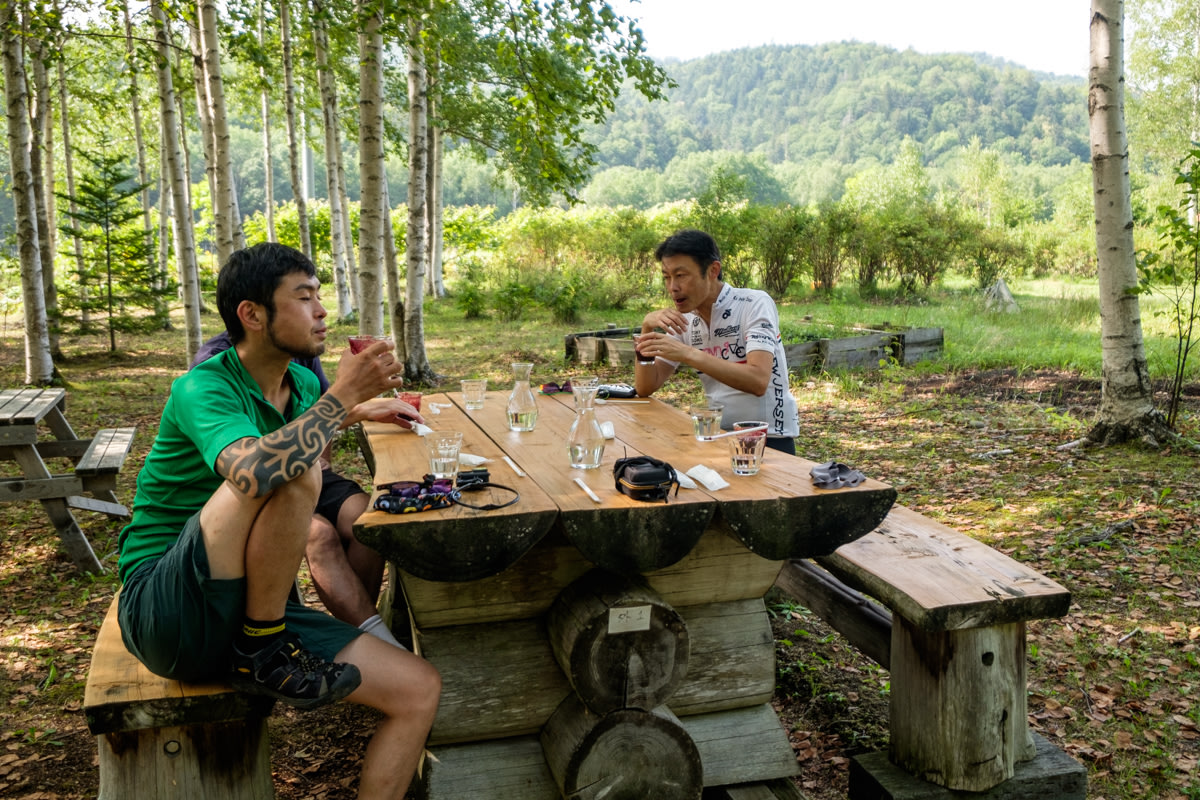
The climb to Karikachi from Ochiai is gentle, climbing amongst the pines along the edge of the valley. We each settled into our own pace and without too much effort we crested the pass. From the pass, it was a fast winding descent down to our Hotel at Sahoro.
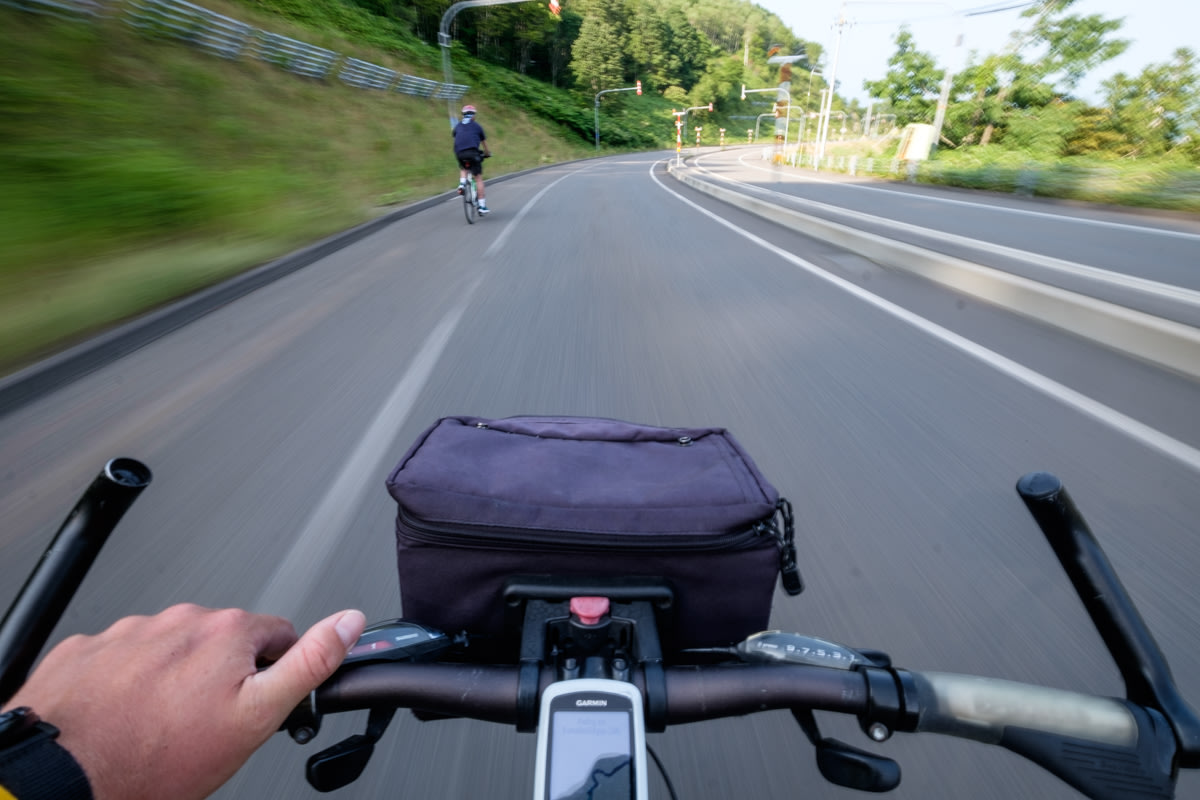
Day 4 – Sahoro to Nukabira
The 4th day of the tour would take us through the Tokachi plains and into the Daisetsuzan National Park, riding alongside Hokkaido’s highest lake before finishing at Nukabira Onsen, a small hot spring town in the east of the national park.
An easy downhill took us from the hotel to the Tokachi plains. The farms here felt bigger than around Biei and Furano. We rode past huge fields of tall corn plants and white buckwheat flowers. Slowly but surely Mt. Sahoro, where we stayed the previous night, grew smaller while our next challenge, the pass between the two Nupukaushinupuri peaks grew closer.
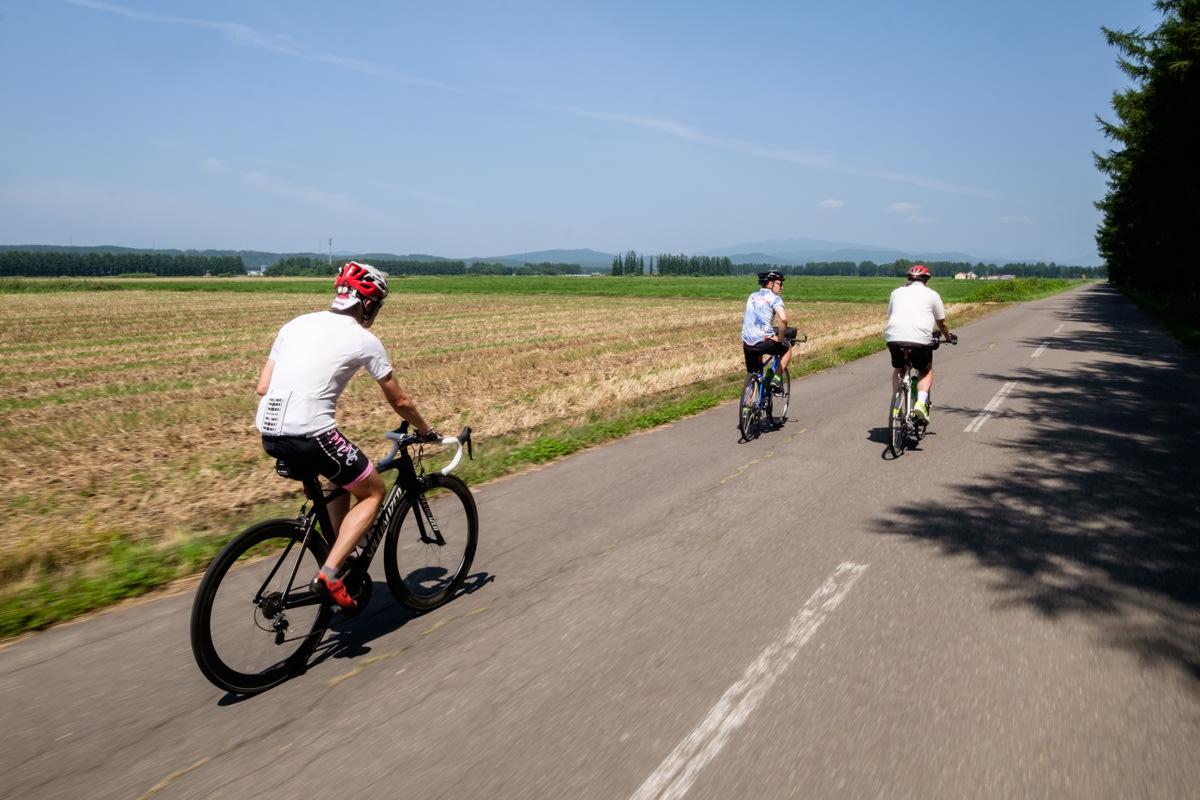
After an ice-cream break - the Tokachi plains are Japan’s dairy capital - we set off on the climb to Lake Shikaribetsu. The climb was steeper this time and I settled into a good pace, enjoying the challenge of pushing myself a bit. Having the freedom to settle into your own rhythm is a great way to ride; Dai would remind us every morning to ride at “my pace”.
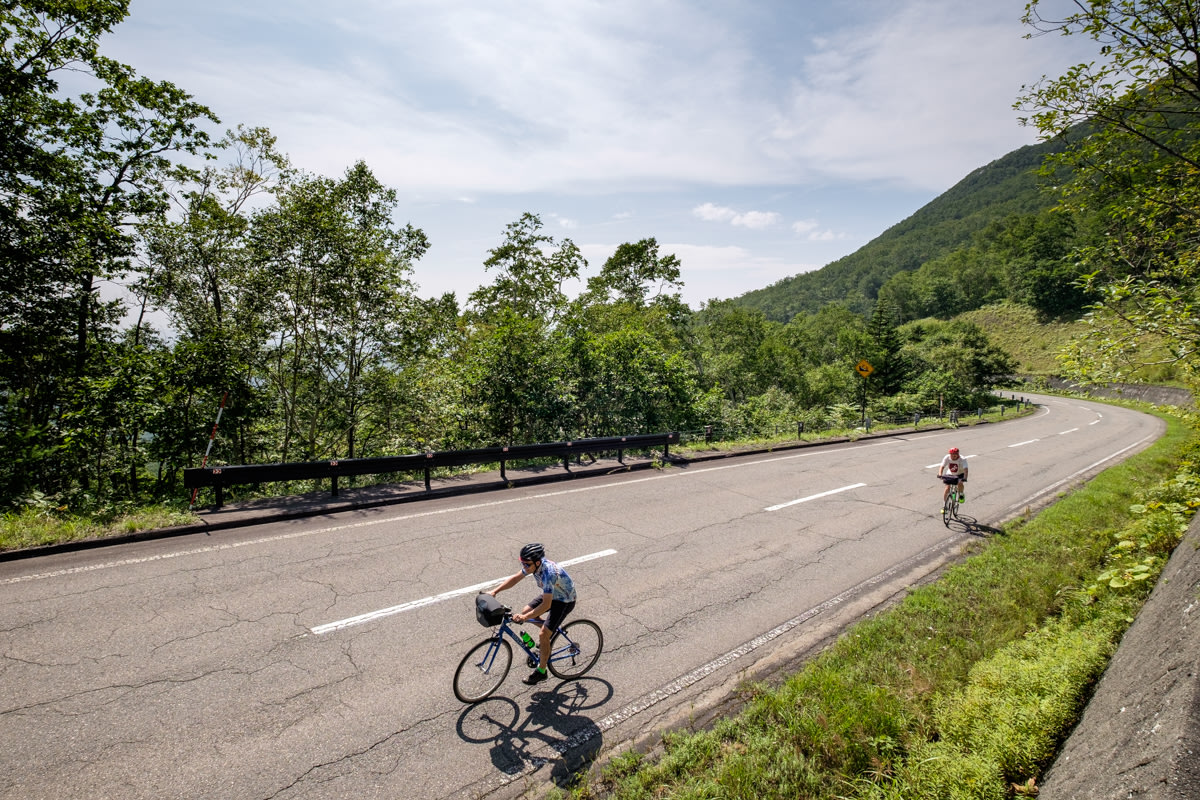
The road wound as it climbed through the forest and you couldn’t see how far was left or how far you had come. The trees opened up at a viewpoint halfway up the climb. Seeing how small the roads on the plains beneath us looked, the roads we were riding along in the morning, was a huge boost of motivation to dig in and get to the top. After another solid effort, we crested the pass and took off downhill, zooming through white birch forest on our way to a hearty curry overlooking the lake.
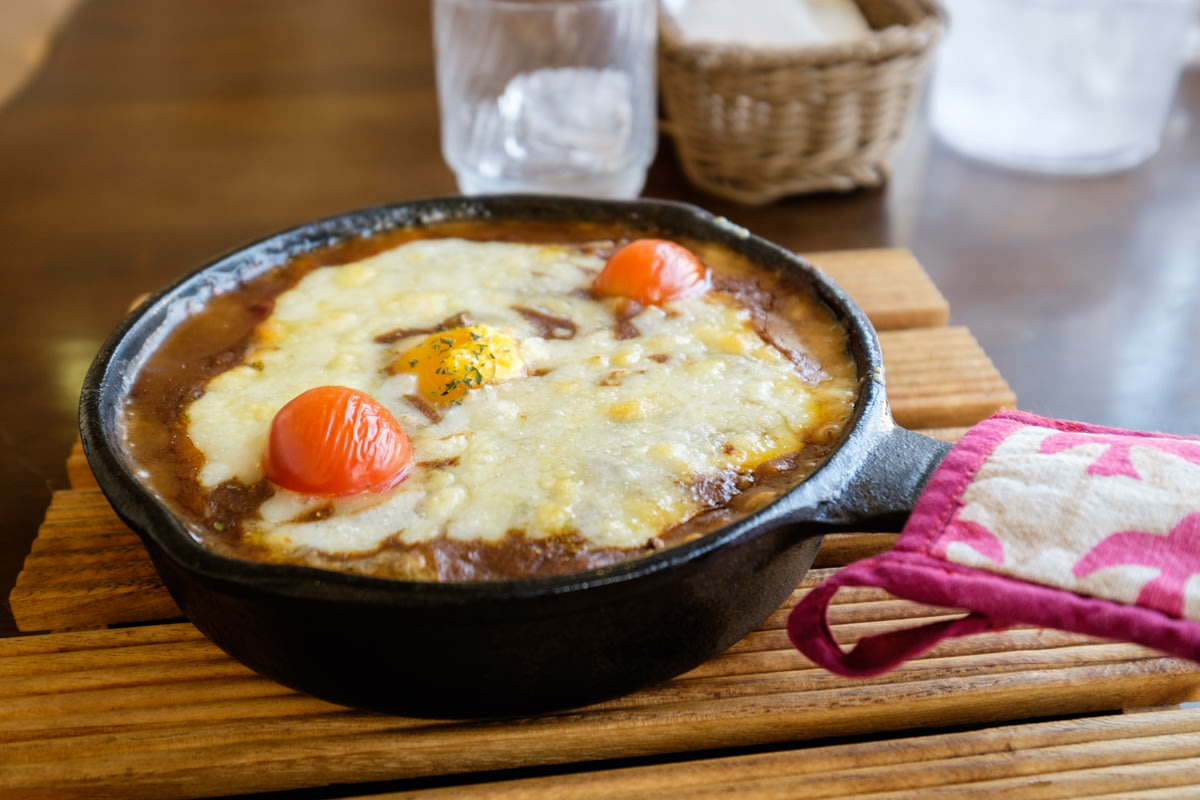
The landscape in the afternoon was a complete contrast to the farms of the morning. We rode through native forest, first along the lakeshore then a gentle creek that feeds the lake. Other than the road, and one abandoned hot-spring hotel, there were no signs of human development, it felt truly wild.
One final pass and it was downhill to the hotel. The road crisscrossed ski runs as it wound down to Nukabira. I love blasting downhill. As a kid I would see if I could ride the footpath to school without using my brakes, or how fast I could ride down the hills around home; I guess I’ve never grown out of it.
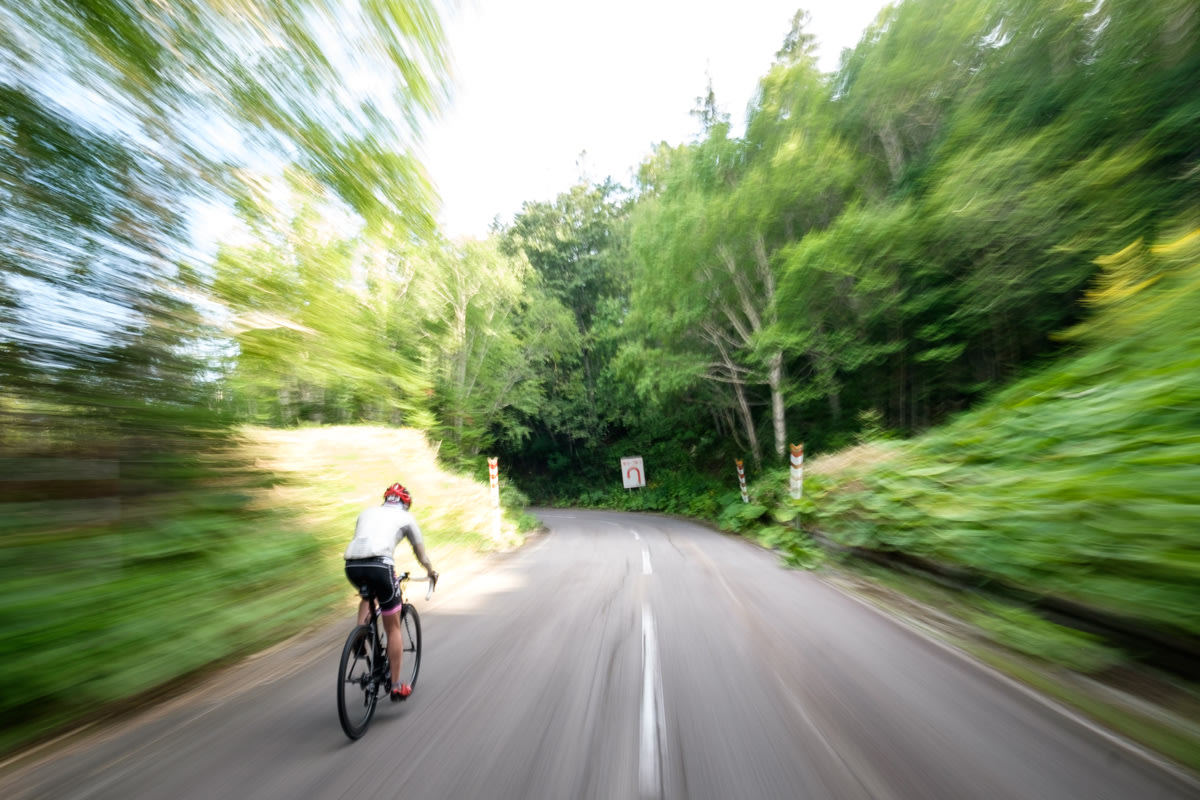
Our accommodation for the night was Nakamuraya, a hidden gem of a hotel. Everything from the cosy lobby to the charming staff make you feel at home. Each hot-spring pool is different, encouraging you to take repeat visits. You can see the stars and sometimes deer from the outdoor pool. To top it off, the food is homemade using locally sourced ingredients, from wild plants to venison. It was a highlight of the trip and I went back for another visit with my wife in autumn.
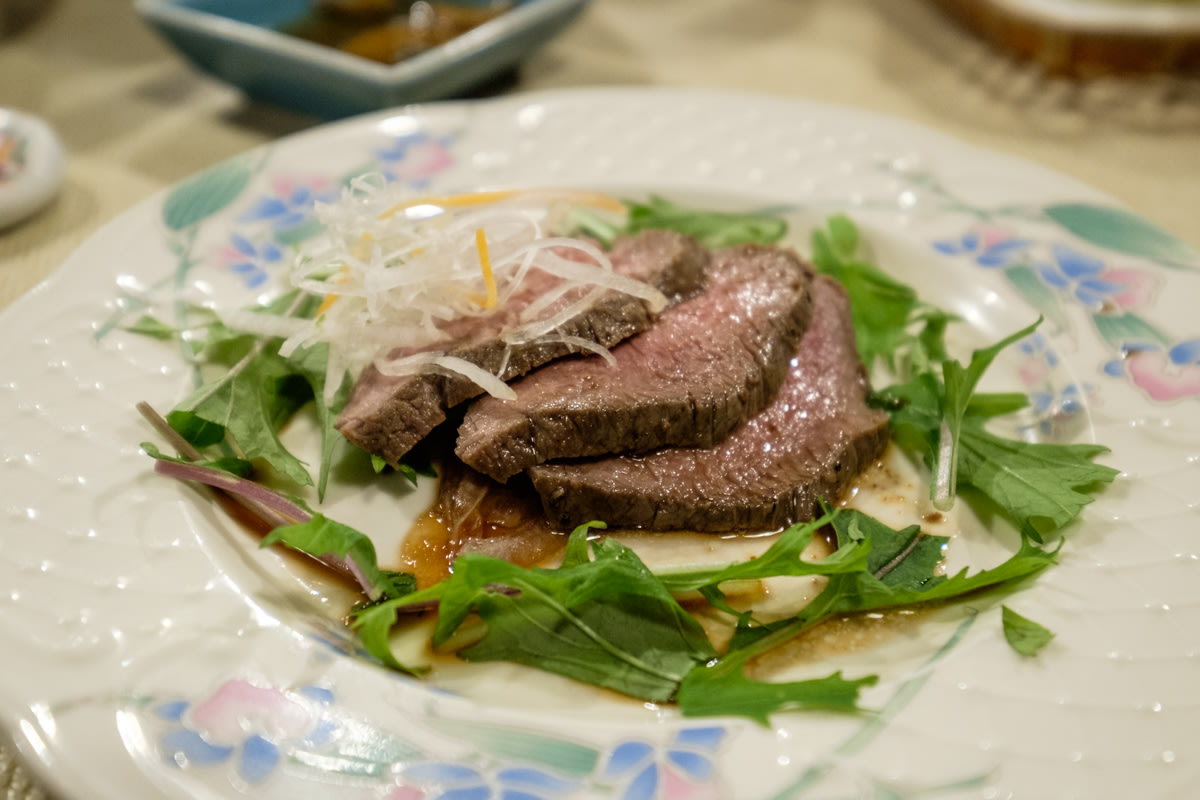
Day 5 – Nukabira to Sōunkyō
If you asked me at the start of the trip which day I was most worried about I would have told you it was this day, as we would climb Mikuni Pass, the highest pass in Hokkaido. However, the climbs on previous days had served as a good warm-up and I knew it wouldn’t be too difficult as long as I settled into my own steady pace.
After filling up on calories at the breakfast buffet at Nakamuraya, the homemade bread, in particular, saw several repeat visits, we set off in pleasant temperatures with some morning fog hanging over the valley.
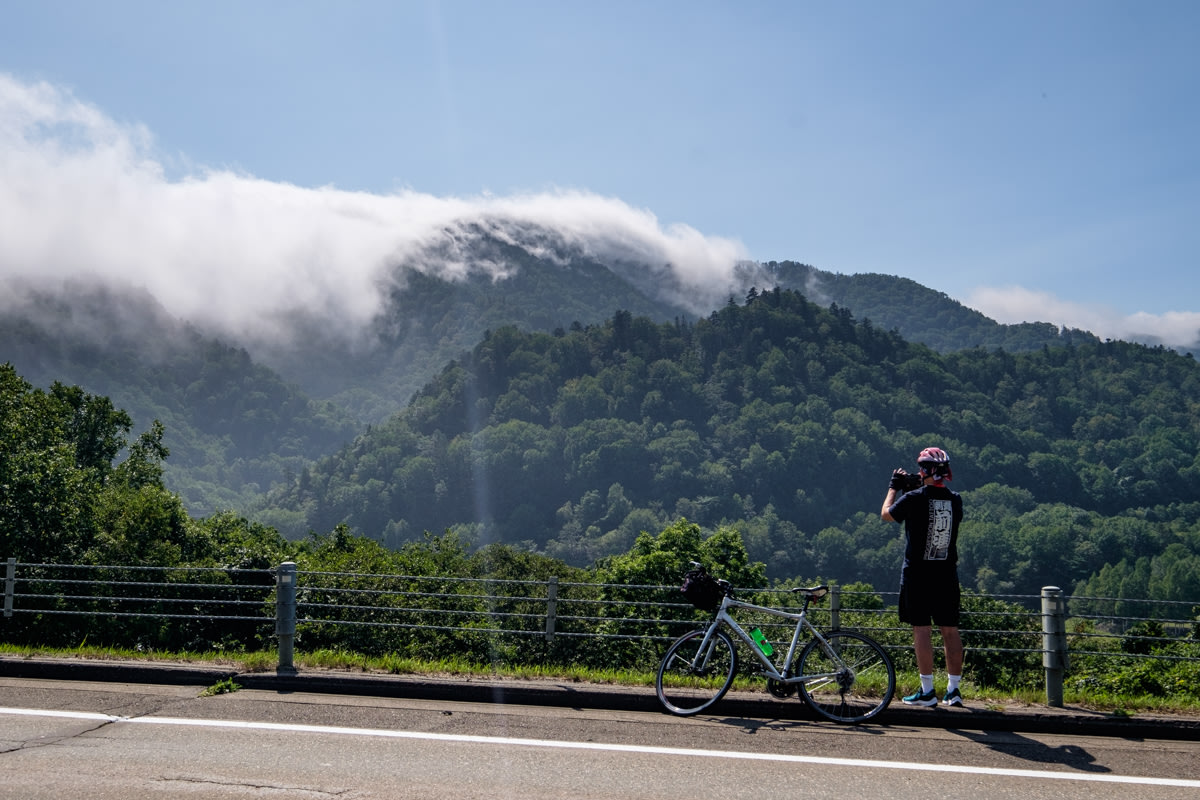
The road from Nukabira to the pass follows the route of the old train line and now and then an old platform or embankment pops out from the trees, providing a trace of villages now reclaimed by the forest.
As we continued up the green valley the road started to steepen and the fir and spruce gave way again to white birch, a good sign we were making progress up the climb. The road climbs up the head of the valley and over two bridges; you feel like you are flying above the forest canopy. The valley stretches south as a sea of green and the road is the only visible trace of humans.
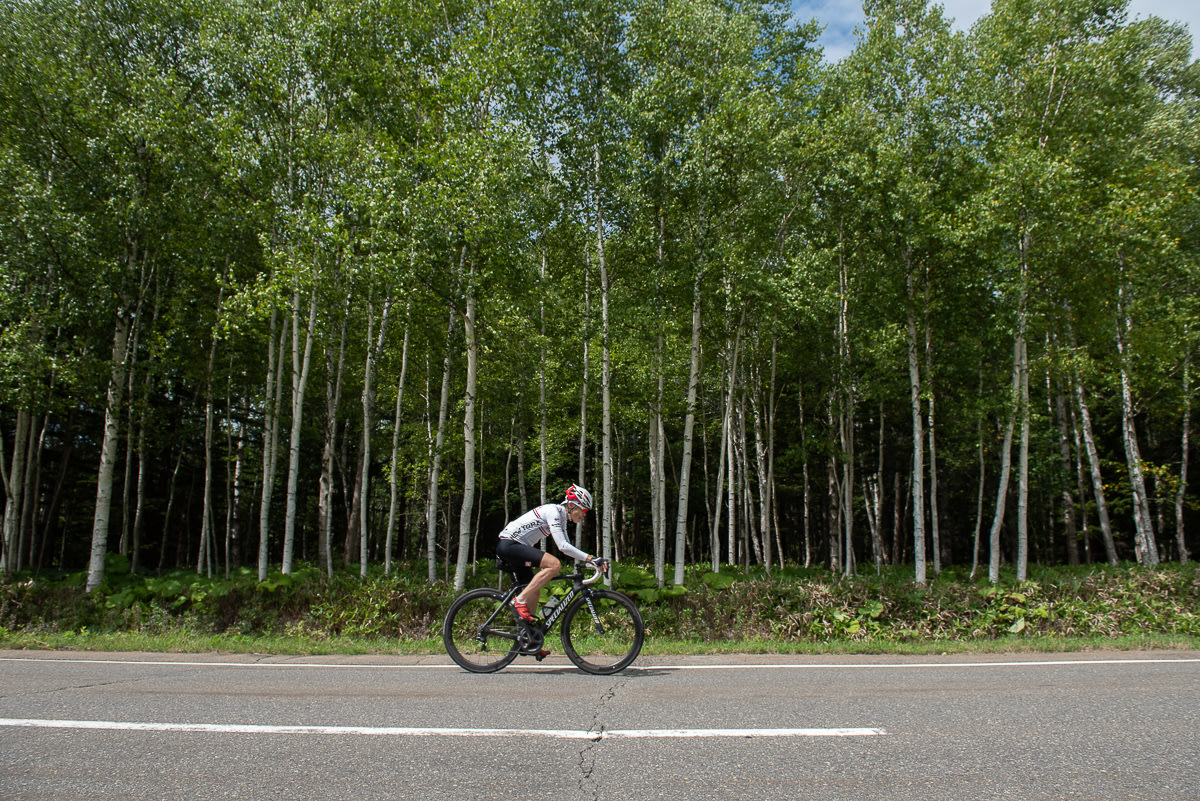
I had driven this road a few times before, but there is no time to take in the view when you are in a car. Soaking in the landscape while you slowly pedal your way across the bridges is well worth the effort, and you can always disguise a rest stop as a “photo stop”. We arrived at the top one by one, some taking more “photo stops” than others, but with a shared satisfaction of making it up under our own steam.

After refuelling with a hearty lunch at a restaurant situated at the top of the pass, we took off for the downhill. All that climbing was washed away in minutes as we sped down to the shores of Lake Taisetsu. The lake was low, a sign of how dry the summer had been, but I was quietly glad that the dry weather was holding out for our trip.
While we try to ride lodge to lodge on our cycling tours, there are 5km of dark tunnels before Sōunkyō that make for unpleasant riding. We instead loaded the bikes into the van and transferred to our hotel, sneaking it a bit of sightseeing along the way.
Day 6 – Sōunkyō to Asahikawa
We had reached the last day of riding for the trip. The route profile looked relaxing. The 67km was mostly downhill along the Ishikari river. While we had been lucky with the weather so far, five days of sunshine, there was rain in the forecast and the clouds looked threatening as we rode out of the hotel’s car park for the last time.
The town of Sōunkyō sits in a dramatic gorge, the name Sounkyo translates to “Stratus Cloud Gorge”. As I rode, I took in the textures of the cliffs, formed by striking vertical columns. Another example of how cycling gives you more time to absorb the roadside scenery.
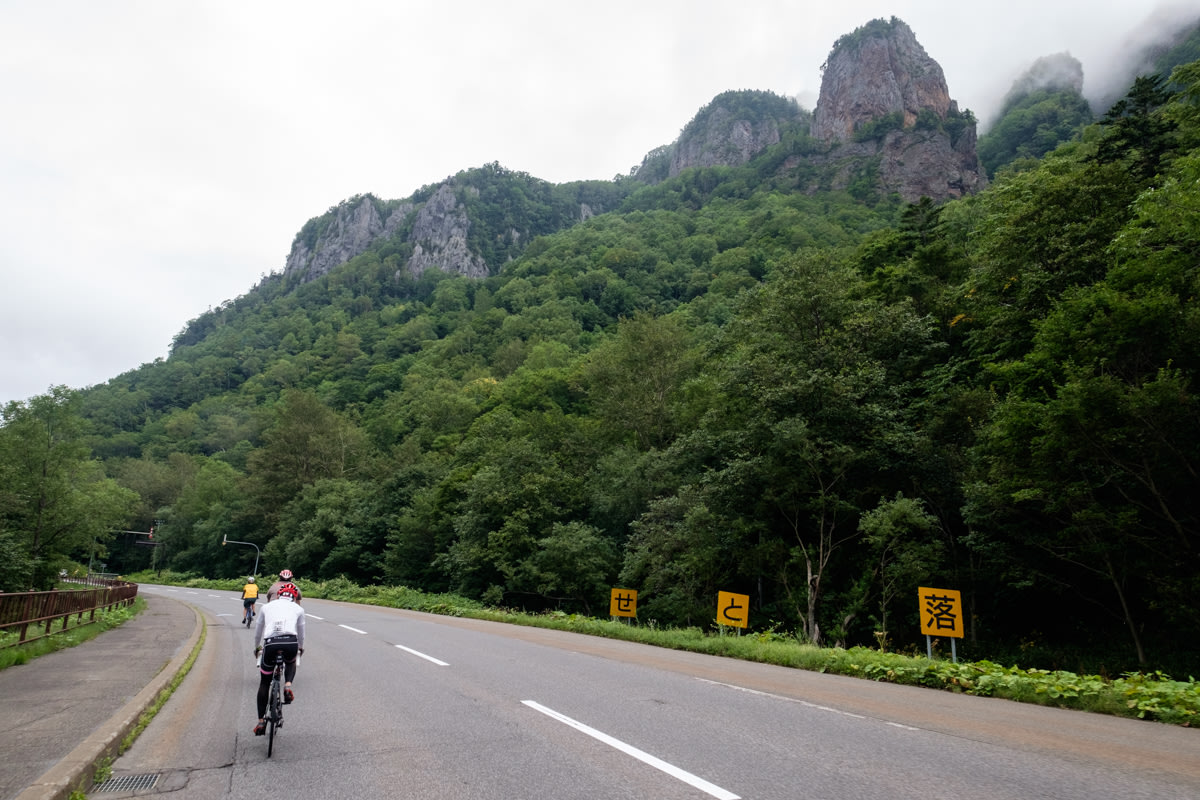
Before long the cliffs receded and the forest was slowly replaced by fields. The relaxed riding made it easy to ride as a group, chatting as we went and reflecting on the past few days on the road.
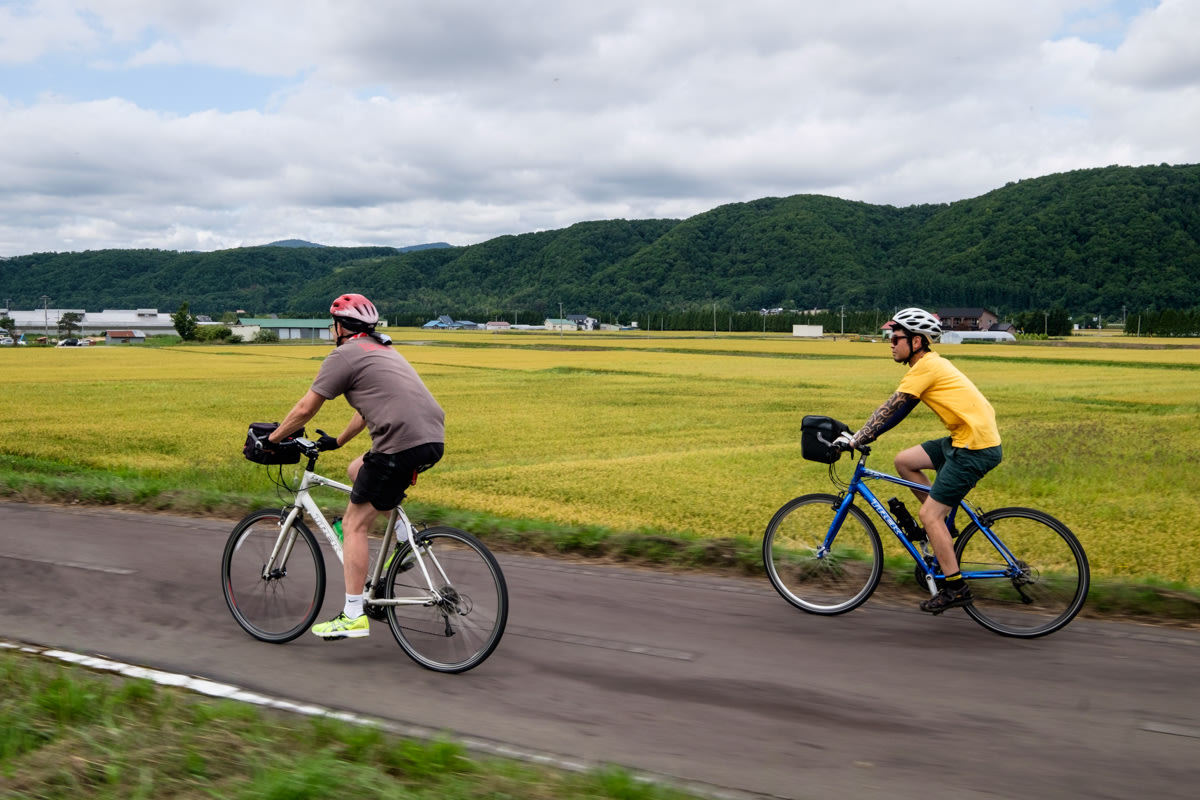
Our morning coffee stop was in Kamikawa town, which gave us a chance to visit a cise, a traditional Ainu house. With long rides, it is easy to focus on just getting from A to B and it’s easy to miss out on experiencing the culture and history of the area you are riding through. Stopping from time to time is worthwhile even if the breaks are brief.
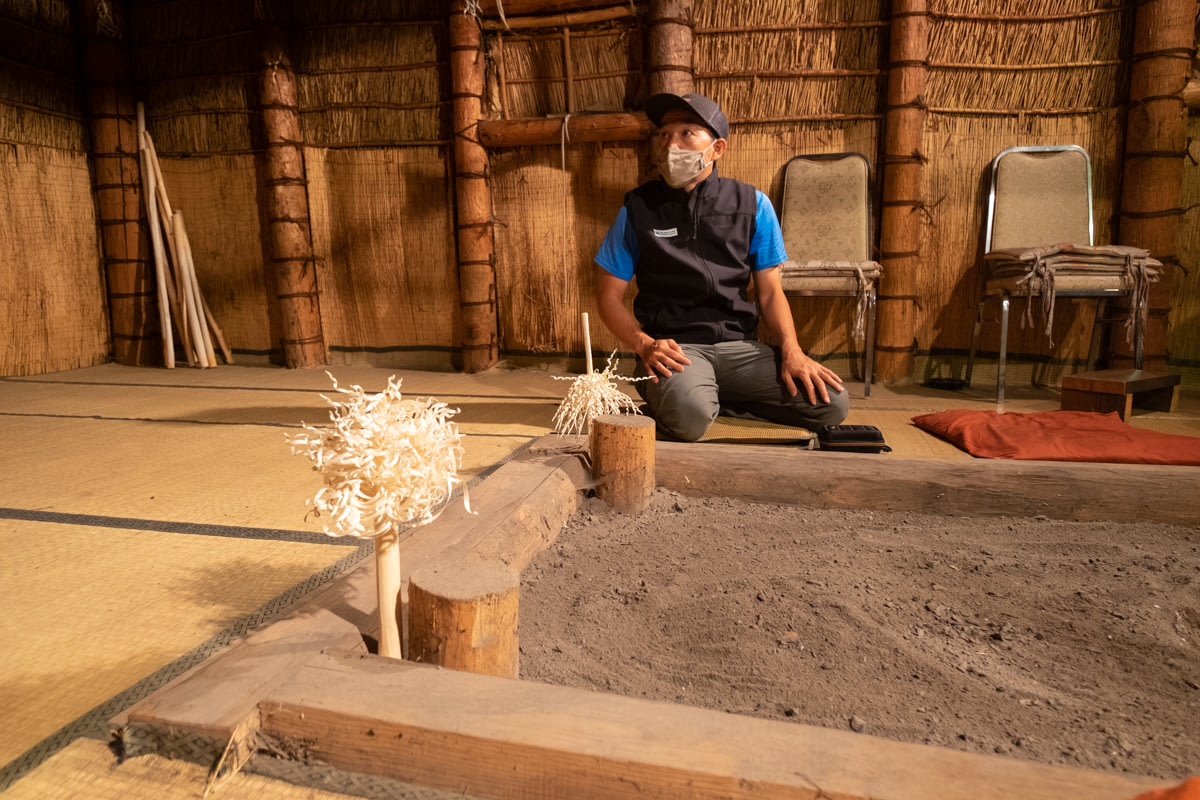
After Kamikawa we joined the riverside cycling path, which delivered us all the way to the centre of Asahikawa. The cycling path travels on top of the levee which runs along the Ishikari river, with views of Hokkaido’s longest river on one side and a sea of rice fields on the other. The rice here had already turned golden, making for a nice contrast to the greenery of the previous few days. The forecast rain never appeared and everyone was in good spirits as we enjoyed the relaxed riverside riding.
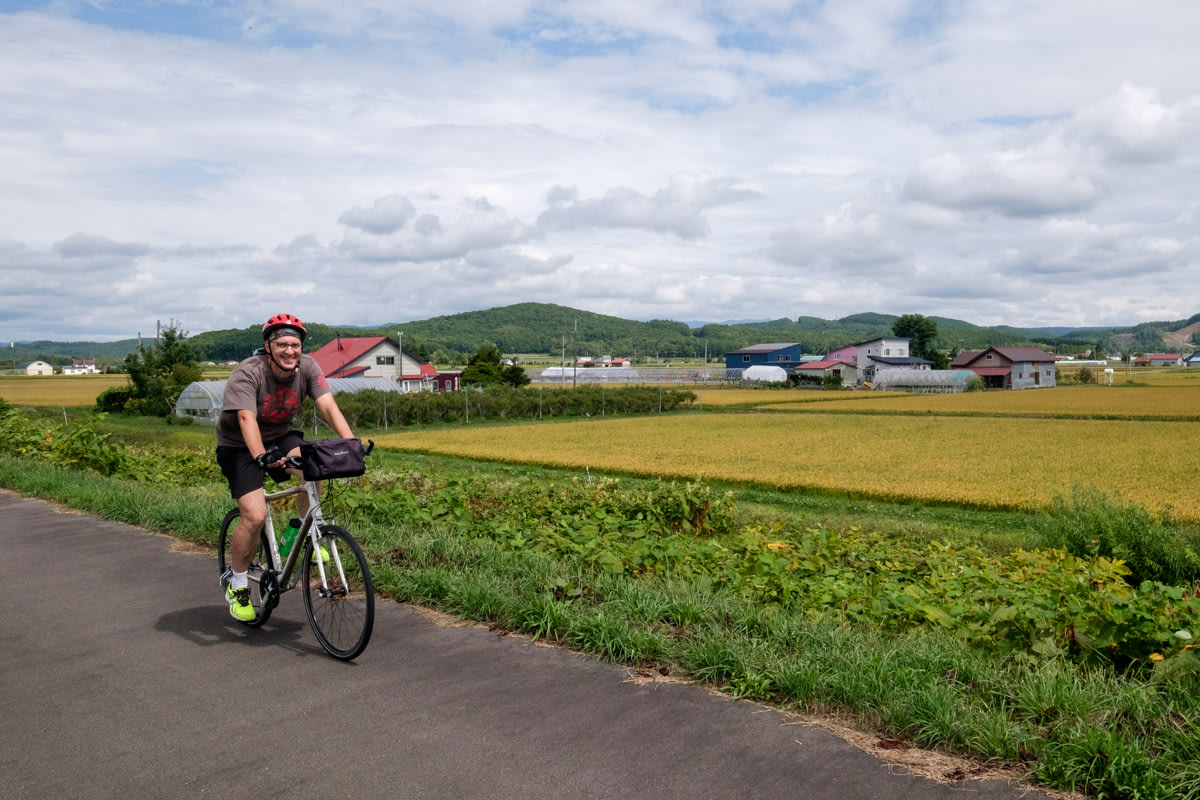
The rice fields gave way to houses and streets as we arrived in Asahikawa city. However, with the cycling path dropping down from the levee into a green floodplain along the river, it didn’t feel like we were in Hokkaido’s second-largest city. After a short detour through town, we arrived at our destination.
After a quick change, we headed to the Otokoyama sake brewery to learn about one of Hokkaido’s oldest breweries. Leaving the bikes behind also meant we could sample some of the produce, without coming afoul of Japan’s drunk cycling laws.
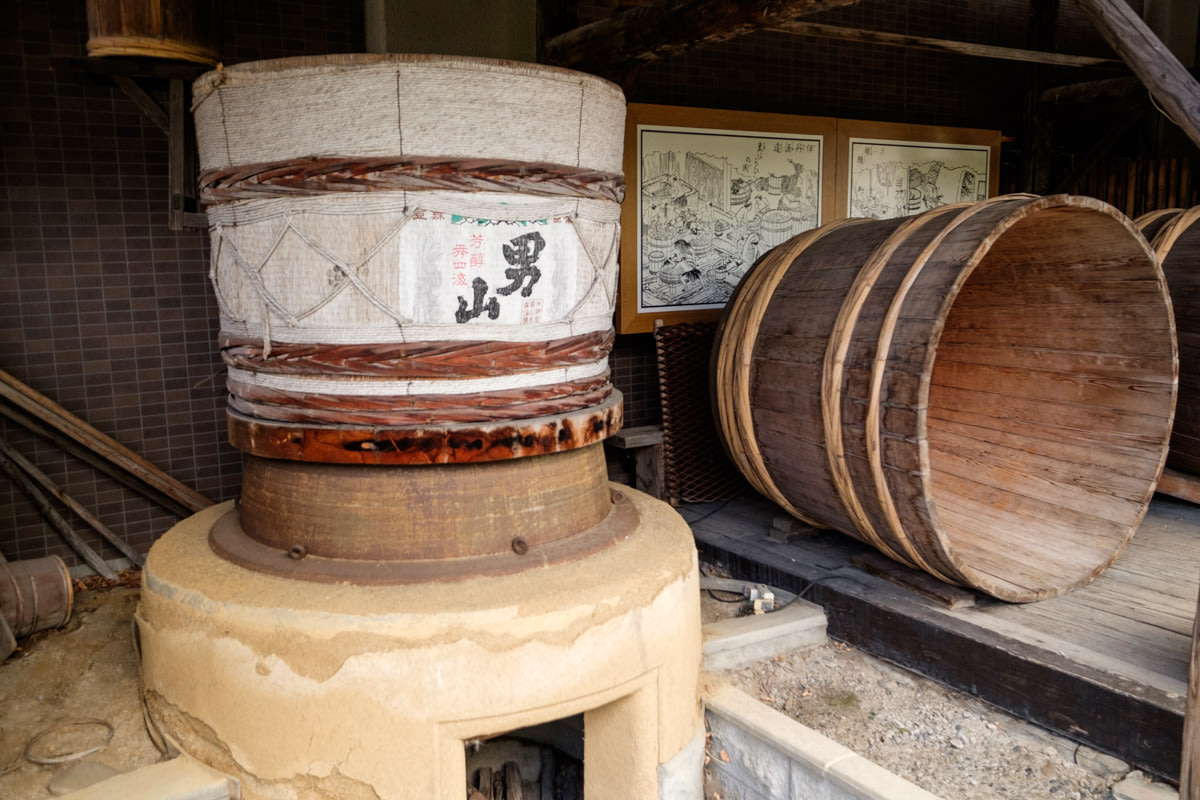
For our final dinner together we headed to a local mutton barbeque restaurant. Jingisukan as it is known here is a Hokkaido speciality. The restaurant operates on a first come first serve basis and the fact they have a separate waiting room across the road testifies to its popularity. Having given up on the idea of coming back from this ride having lost weight, we all filled our bellies with plate after plate of delicious marinated meat, with the occasional plate of vegetables. It was a perfect way to finish the tour.
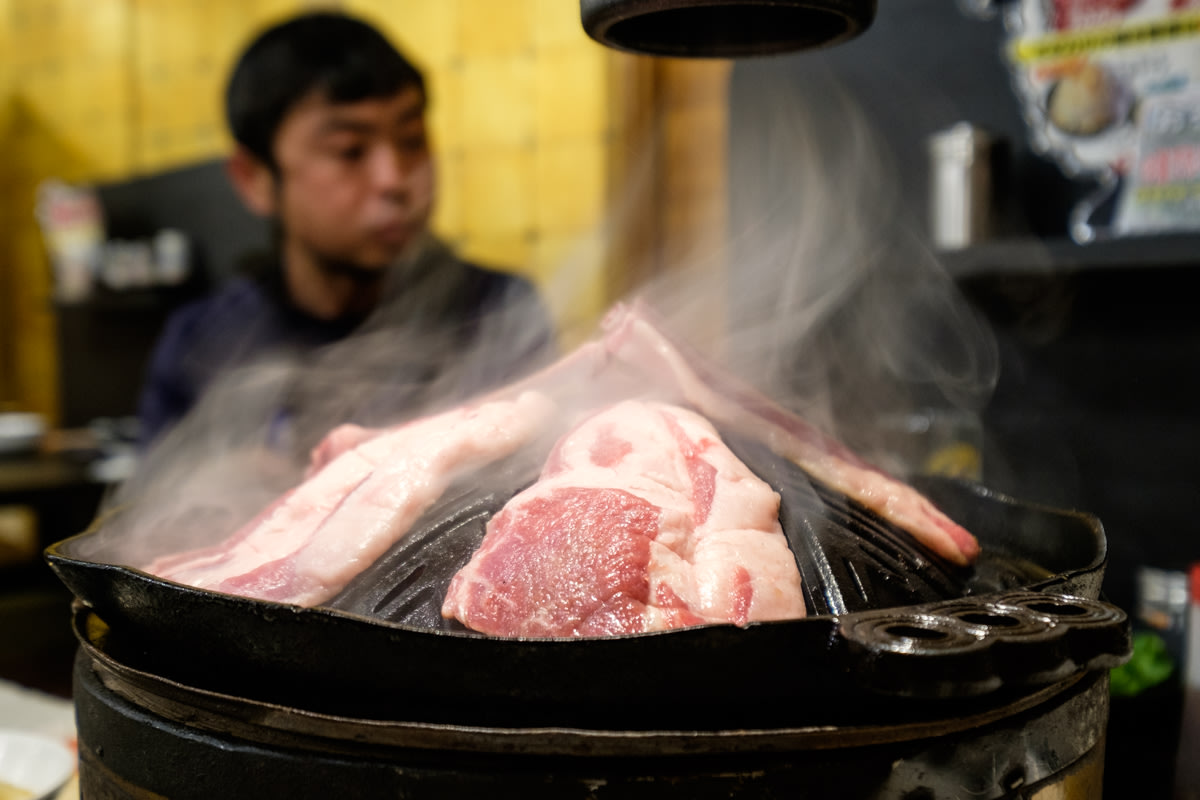
Reflections
Seeing the different sides of the Daisetsuzan mountains on this trip reminded me how much I enjoy the pace of travelling by bike. You have time to soak in the scenery but still cover enough distance for the views to be constantly changing. There was a great contrast between the farmland on the western side of the mountains and the natural forest of the east.
Burning calories every day makes it easy to justify filling up on delicious local food at dinner every night, although I wouldn’t recommend this trip as a weight loss program! Alongside the amazing food, soaking in a hot spring every night is another thing that makes cycling in Hokkaido a great experience.
Dai and Ayu did a great job leading the ride, from setting up well timed coffee stops to suggesting a detour to local cafes, they made the ride comfortable and well caffeinated (or tea’d if that’s your thing). They chatted with everyone as they rode, but still gave us all freedom to find our own enjoyment in the riding.
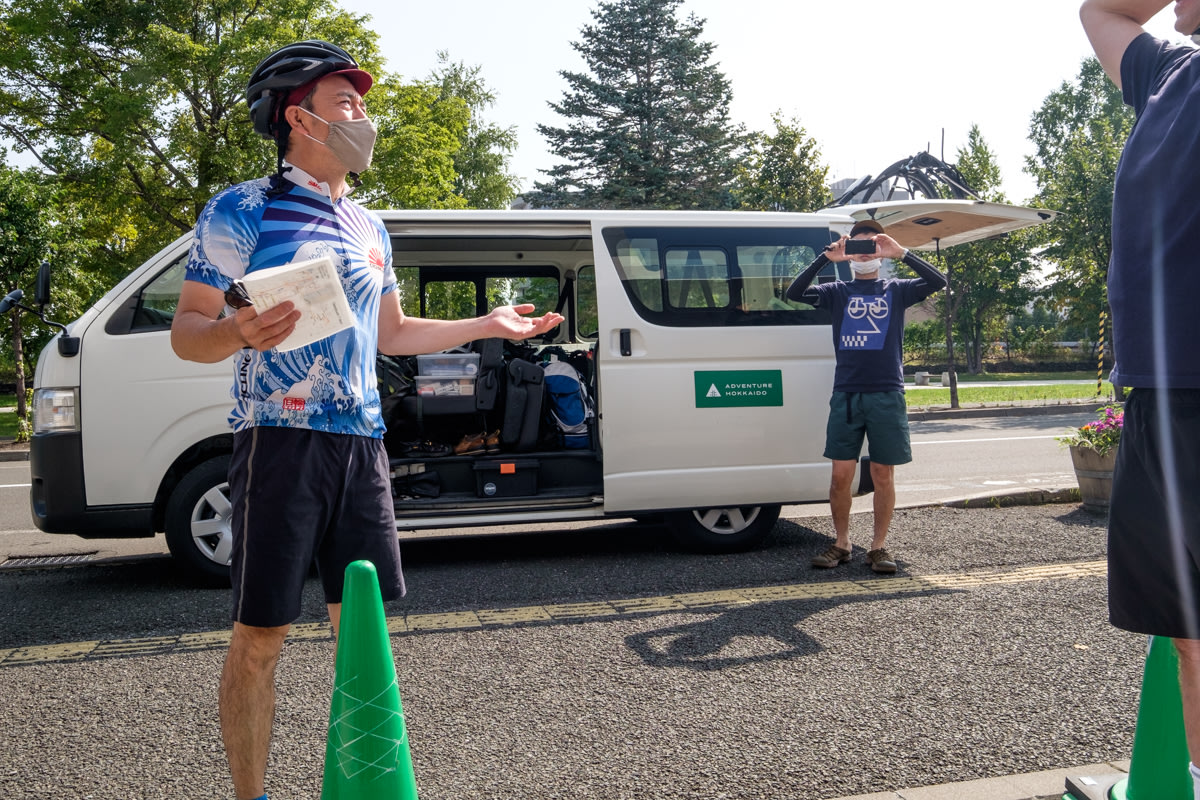
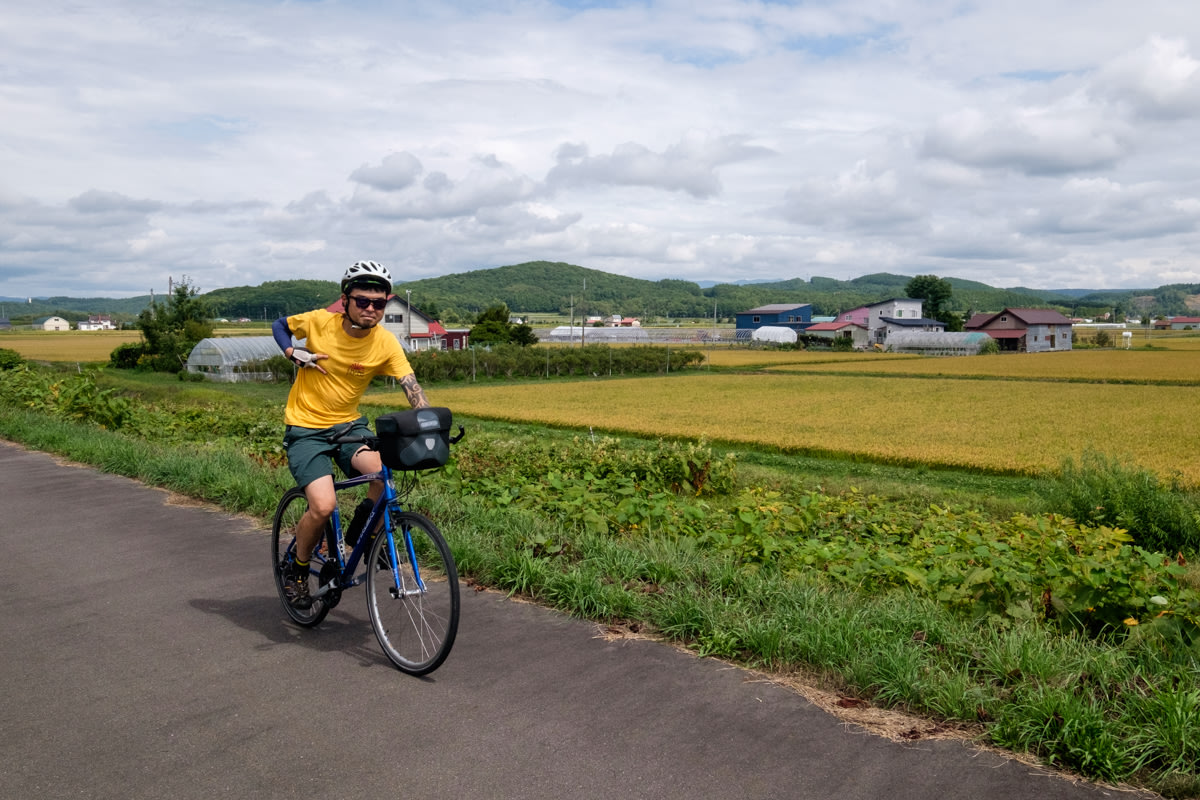
The scenery lived up to my expectations, from the patchwork farmland around Biei to the wild forests of the Eastern Daisetsuzan. I definitely appreciated the extra time to take in the views that cycling affords. But it was the people that made the tour so memorable; chatting about Japanese history as we rode through farmland, friendly drivers and surprise sweet corn and the warm welcome at every stop. There is a lot to discover on a multi-day bike ride, so it’s best to take it at “my pace”.
Discover the Daisetsuzan yourself
Experience the same quiet roads, stunning scenery and delicious dining yourself